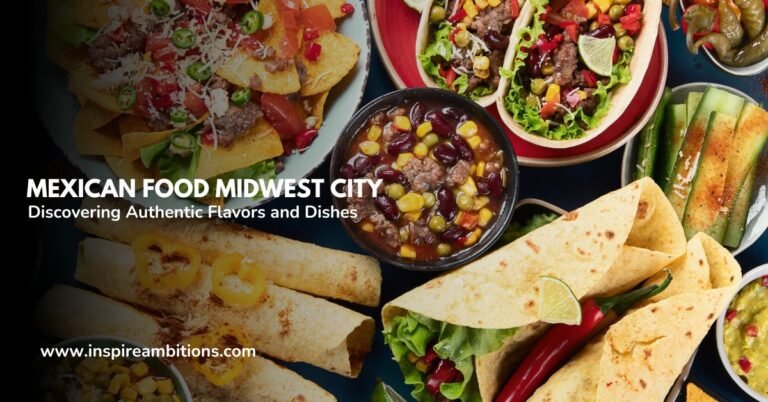麻辣烫是清真食品吗?了解其成分和制备方法
Malatang, a popular Chinese street food known for its spicy and numbing flavour, has been gaining traction worldwide. Given its origin in Sichuan cuisine, which traditionally includes non-halal ingredients such as pork, many Muslims may wonder whether they can partake in this fiery experience.
Addressing this concern, food enthusiasts and restaurateurs alike have worked on crafting halal versions of malatang, ensuring that the dish maintains its authentic taste while adhering to Islamic dietary laws.

The key to enjoying malatang is understanding what makes a dish halal. It’s not just about excluding haram (forbidden) ingredients but also about ensuring that the entire preparation process complies with halal standards.
As the demand for inclusive culinary experiences grows, finding halal malatang has become more accessible, with numerous establishments catering to this need. This adaptation expands Malatang’s reach and enriches the culinary scene by embracing diversity and inclusion.
Is Malatang Halal? – Key Takeaways
- Malatang’s spicy and flavorful soup can be adapted to meet halal standards.
- Understanding halal guidelines is crucial to enjoying malatang responsibly.
- Halal malatang options are increasingly available, enhancing the culinary scene.
Understanding Malatang
When delving into the vibrant world of Chinese cuisine, malatang emerges as an exciting and customizable soup-based dish that brings the warmth of Sichuanese flavours right to your bowl. This section highlights the origins, traditional ingredients, and the ever-evolving variations of malatang, aiming to provide a comprehensive guide to this savoury dish.
Origins and Culture
From Sichuan, China, 麻辣烫 is a testament to the region’s culinary heritage and a staple of street food culture. It translates to “numb spicy hot,” which is a direct nod to its characteristic mala flavour—a tingling sensation derived from Sichuan peppercorns combined with various levels of spiciness.
Key Ingredients and Flavor Profiles
At the heart of malatang lies its 肉汤, robust and enriched with spices. Your malatang’s foundation often comprises:
- 肉: traditionally beef, but also includes other proteins like chicken or lamb
- 海鲜: for a salty kick
- Noodles: which absorb the flavorful soup base
- 蔬菜: ranging from leafy greens to mushrooms
- Tofu 和 egg: adding a soft texture contrast. Each element contributes to an intense, deeply savoury, and spicy experience rounded out by the unique mala sensation.
Variations and Modern Adaptations
As malatang has traversed borders, chefs and food enthusiasts have embraced and tailored it to local tastes. Modern adaptations might feature less oil or include unique ingredients like chicken cutlets with mala-infused mayonnaise, while still celebrating the soulful essence of the original dish.
Malatang and Halal Compliance
When exploring the deliciously spicy world of Malatang, it’s crucial to consider whether this popular Chinese street food aligns with Halal dietary standards.
Halal Food Fundamentals
Halal, an Arabic term meaning “permissible,” governs what is acceptable for consumption under Islamic law. Halal food standards prohibit the consumption of 猪肉, alcohol, and animals not slaughtered adequately according to the Islamic method. Beef and chicken must be explicitly prepared, and cross-contamination with non-Halal substances must be avoided.
Malatang Ingredients and Halal
Malatang, known for its tongue-tingling Sichuan spices, typically consists of various ingredients such as meats, vegetables, and noodles cooked in a hot broth. For Malatang to be considered Halal, every ingredient, including the beef and chicken broth, must meet Halal requirements. The inclusion of 猪肉 or its by-products in Malatang would render it non-Halal.
Obtaining Halal Certification
餐厅 offering Malatang can obtain a Halal certificate to assure Muslim customers of their compliance with Halal standards. The rigorous certification process ensures that the meat used is properly slaughtered, the kitchen is free from contamination, and all preparations adhere to Halal procedures. Some establishments work with certified suppliers and seek Halal certification, like Mala Mini Hotpot, which is getting certified.
Where to Find Halal Malatang?
If you’re seeking Halal Malatang, there are several options to satisfy your cravings. Whether through restaurants, specific locations renowned for their culinary diversity, or by creating the dish yourself, you can enjoy this Sichuan speciality.
Restaurants and Food Outlets
You can find a selection of Halal Malatang at various restaurants and food outlets. One notable example is Auntie Tang, an authentic halal malatang soup kitchen that offers a variety of hearty options. Social platforms like Facebook 和 Instagram are excellent resources for discovering new areas where Halal Malatang is served.
Checking the social media pages of restaurants can give you the latest updates on their halal certification status and menu offerings.
Geographical Hotspots
肯定 geographical hotspots are known for their vast selection of halal eateries. Critical cities like 新加坡 have a plethora of culinary treasures, where one can find Halal Malatang without much difficulty, including areas near major MRT stations or busy streets like Victoria Street. In Malaysia, towns such as Petaling Jaya and neighbourhoods likeAndarr Utama 在 Selangor also offer a range of options for this dish.
Home Preparation and Recipes
If you prefer the comfort of your home, home preparation and recipes are readily accessible online. You can tailor the spiciness to your liking and ensure all ingredients meet halal standards. You can source halal-certified beef and other ingredients from nearby grocery stores or Halal markets, bringing the essence of Sichuan cuisine into your kitchen.
Enjoying Malatang Responsibly
When indulging in the spicy and distinct flavours of malatang, it’s essential to consider the vibrant taste experience and the dietary laws, cultural nuances, and health aspects involved.
Dietary Considerations
For those observing halal dietary restrictions, it is essential to choose 麻辣烫 establishments that cater to these needs. Certain outlets have obtained halal certification to serve a broader customer base. When enjoying malatang, vegetarians must also ensure that the variety of fresh ingredients meets their dietary preferences, with options that exclude animal products.
Cultural Sensitivity and Appropriateness
Understanding the cultural significance of malatang is critical to respecting the cuisine and the people from which it originates.
As malatang is a dish that comes with a specific spice level, it is respectful to enjoy it in a way that honours its tradition—whether it’s delighting in the 辛辣的 broth or customizing the ingredients to suit personal flavour profiles without diluting its authentic essence.
Health and Nutrition
Malatang can be both 有营养的 和 addictive with its tasty, 辛辣的 broth and numerous fresh ingredients. However, to maintain a healthy balance, be attentive to the nutritional value and choose a mix of vegetables and proteins that provide a well-rounded meal.
Keeping an eye on the spice level is also important, as excessive spice can lead to discomfort for those unaccustomed to high heat levels.
Remember, when enjoying malatang, the key is to respect dietary restrictions, cultural heritage, and health considerations for a responsible and satisfying culinary experience.
Malatang in the Culinary Scene
Malatang, a beloved spicy soup from Sichuan, is not just about the heat; it’s an art that balances spices like Sichuan peppercorns with aromatic ingredients such as garlic. The culinary landscape has embraced Malatang, adapting it in various forms, from traditional street food to modern restaurant fare.
Popularity and Trends
Malatang has seen a rise in popularity, especially in cosmopolitan cities worldwide. It’s associated with the authenticity and bold flavours of Sichuan cuisine. Chinese restaurants offering this dish have become hotspots for those seeking a genuine taste of spice and comfort in one bowl.
Malatang’s growing reputation can be partly attributed to popular chains like Yang Guo Fu Malatang, which has introduced the delicacy to a broader audience. Its popularity is also rising due to the increasing global curiosity about regional Chinese cuisines from places like Chongqing 和 Dongbei.
Reviews and Recommendations
Critics and diners praise Malatang for its spice level, which can be tailored to individual preferences, and the variety of side dishes. One notable variety, mala tang, delivers a potent combination of numbing and hot flavours. For an even more intense flavour, mala xiang guo is recommended.
Reviews often point out the joy of customizing the content of one’s pot with various meats, vegetables, and noodles. Websites like TripAdvisor or Yelp provide many user-generated reviews, where one can find recommendations for the most 真正的 Malatang experiences.
Innovations and Fusion Dishes
Adaptation and innovation have led to Malatang variants that cater to different dietary preferences, including halal versions. YGF Malatang is such an example, providing a halal-compliant option. Chefs have created fusion dishes, incorporating local tastes and ingredients while maintaining the essence of Malatang.
The result is a tapestry of flavours, like infusing traditional Malatang with non-traditional elements such as mala-infused mayonnaise, which speaks to culinary creativity and cross-cultural appreciation.






